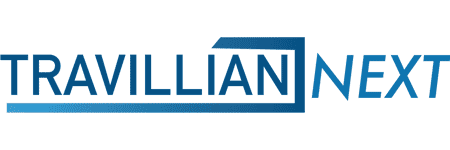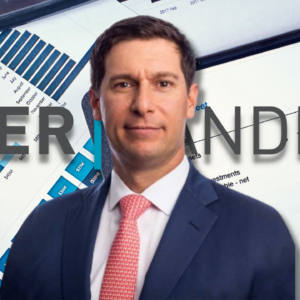Scott Hildenbrand, Managing Director and Chief Balance Sheet Strategist at Piper Sandler, joined Travillian’s Head of Banking & Fintech, Brian Love, in a discussion around the economic moment and what it means for community banks and their balance sheets. Scott gives his thoughts on better-run ALCO meetings, how to think through a high loan-to-deposit ratio, and the transformation of the CFO position over time.
Brian Love: Tell us a little bit about what you do, Scott.
Scott Hildenbrand: I spend pretty much every day, all day, and I have a team of 26 of us who spend all day, every day, working with community banks, thrifts, credit unions, all dealing with changes in interest rates and asset liability mix and how to really put together a game plan for where we’re headed from an interest rate, risk and balance sheet strategy perspective.
It all starts with asset liability modeling. If you can’t determine “what we look like,” it’s going to be really difficult to determine strategies going forward. Banks should start backwards by understanding where they are and then thinking about what potentially could happen and what we’re going to do if that does happen.
I think that’s the key as well, as you alluded that things are a little bit different than planned already in 2022.
Brian Love: Yes, you’re right… Heading into 2022 it seemed like everything was coasting in a positive way for banks. But more recently, our economy has taken a bit of a turn, so our community bank clients might want to think a little bit more about their balance sheet strategy. Tell me, what is your primary message to community banks out there?
Scott Hildenbrand: I am allowed to say this- and I mean this nicely- I traveled the country and am probably in more Board and ALCO rooms than anybody. There are two types of ALCOs and balance sheet strategists in the community bank space, you’ve got the 80% of the world that treats ALCO like a dentist appointment. Truly, they can’t wait to get out of there, make sure the examiners are happy and we move on. But you’ve got the other 20% who actually play a little bit offense. And they look at their balance sheet as a “weapon” in terms of what can I offer my customers in terms of term, rate, product optionality, that maybe some of my competitors can’t.
And I can’t do that, Brian, without truly understanding what my balance sheet looks like. What part of the yield curve am I even exposed to? Maybe I can differentiate my earning assets and the way that I’m driving loan growth and serving my customers in my area – in my community – better, and doing it by using that balance sheet as a weapon.
Brian Love: When we were talking before you mentioned that banks should not confuse their interest rate risk with yield curve risk. Tell me more about that thought process.
Scott Hildenbrand: When I grew up – you and I are around the same age – we thought about interest rate risk, all we really thought about was taking interest rates on a parallel shift. “Up 100 or 200… down 100, down 200.” And that’s kind of how I learned the business, but I’ve learned a lot over the last couple of years, given all the rate moves and everything that’s gone on with the Fed. Now the first question I ask every Board and ALCO room, and I don’t get great answers all the time, Brian is: What part of the yield curve matters most to you? Everyone gives me a weird look, because what I’ve found is about 80% of spread business is driven off about 20% of the yield curve. So, at times we get a little bit too comfortable saying “I do well when rates rise, or I don’t do well when rates rise,” it’s the old asset or liability sensitive approach, which worked when I first started.
But today you’ve got to understand the parts of the curve that matter most to you. And then from there determine strategies to either take advantage of opportunities or address concerns, depending on those rate shifts. You go back just a year ago, Brian, and you think about March 2021, we saw a 10-year treasury double, and every investor in bank stocks I speak to, they kind of called me and said, “Hey, Scott, everybody told me they’d do better when rates rise.” The 10-years doubled and everybody’s running for the hills when they want to talk about margin projections, and it’s because nobody is really exposed to the ten-year part of the curve, right? It is not organically, maybe synthetically, and that is when you start to use your balance sheet as a weapon.
I learned it from there, and then if you think about where we are today, twos and tens used to have a wide spread a year ago, that’s cut in half. And what has been wider is the Fed funds and 5-year spread. And that really drives a lot of community bank margins. And that’s where you have to design your strategy. Once you determine the parts of the curve that matter most to you.
Brian Love: There seems to be a strange dichotomy because a well-run bank franchise is usually measured by its deposit generation. However, everyone is flush with deposits and they’re kind of burning a hole into balance sheets. So, what are you noticing on how to deploy these best, with lending or even maybe acquiring loan pools?
Scott Hildenbrand: It has really been interesting to watch through this entire deposit mania. You go back to January of 2020. Could you imagine if I stood up at a conference and said, “I know you all are fighting each other for the next deposit to come in, give me two months and I’m going to give you more deposits, more non-interest bearing deposits than you’ve ever seen in your entire career times ten.” Everybody would look at me like that was crazy. Two months later, boom. That’s exactly what happened.
I think people forget because so much has happened in a short period of time, but 2019, 2018… those were very difficult deposit gathering times and you flip it on its head, it didn’t take more than a month for that to dramatically shift. So naturally it caught pretty much everyone off guard. There’s no playbook for a 100-basis point rate cut on a Sunday with $6 trillion dumped into the industry. There just isn’t. So how do you think about model and project, not only what your deposits are going to look like, but now you’ve got pressure on the asset side.
So not only did all of that happen, I couldn’t find a loan anywhere because the economy was literally told to stop. The other asset class, banks typically spend their time on? Securities and the investment portfolio. Guess who’s buying those? The Fed and they’re buying them at bigger sizes.
So, all of a sudden we saw spreads tightening, yields at all-time lows, and I had to go buy assets, sit in cash, or try to originate a loan wherever I could find it. All three were very difficult choices. But I’ll tell you, I think as we’ve gone the first three to six months when COVID started, everybody told me deposits would start running out of the bank. Then it was about a year. Now we’re full two years in, and I’m still looking at low loan-to-deposit ratios across this country.
The Fed is going to move rates here [this year]. And everybody’s kind of like, well, what’s going to happen to cost of funds? What’s going to happen to deposits? So, my answer is: “Probably nothing.” Because what I always modeled back when I first started 20 years ago is: I tied my cost of funds and my offering rates on the deposit side to what the Fed did. Some percentage of that I had to call a beta. Today, that’s different. I look at me and my top 10 competitors’ loan-to-deposit ratio and that will be my trigger of when, and if, I have to start increasing my deposit rates.
So, I think the world has changed. We cannot model and project the same way we did before. It’ll happen, the pendulum will swing, but I think you’ve got to be putting assets on, whether it’s loan origination, which is the first place. Number two is obviously the securities world. You’ve got to hold your nose, sitting there, waiting in cash and trying to hit the home run is frightening to me as well. And everybody tells me, “That’s conservative, that’s a bet.” The third one, and you mentioned it and you’re right, looking at different loan packages across the country at other institutions, that’s very difficult because nobody wants to be a seller and I’ve got a thousand buyers on paper, and that’s a challenge. That’s a challenge which drives spreads down dramatically, too. It is not easy right now to be a bank CFO, managing changes and rates, balance sheet changes, the board, stock price, the market’s, inflation. I mean, it’s a lot going on as you can imagine. It’s been keeping us certainly very busy over here at Piper Sandler.
Brian Love: Well, and that’s an interesting point, from the talent perspective, as that’s my purview, there’s kind of an evolution in the CFO seat to some degree. And there are tremendously talented CFOs there, I’m not trying to poke at anyone. But there may be an evolution of the skill sets. Gone are the days of a bean counter, here are the days of someone, as you mentioned, who knows, ALM, IRR, liquidity, all of those things kind of almost more cut from the treasury world than the accounting world. What’s your take on this?
Scott Hildenbrand: Brian, I’ve been seeing it and I kind of, I almost connected to the asset liability world in general, but when I first started, I was told I could go to the ALCO meeting, don’t ask, don’t speak, don’t say anything- only if someone asks you a question. I knew the numbers somewhat randomly that someone wanted to ask me. I see that the same way, the IQ of the Chief Financial Officer hasn’t changed. It’s still incredibly intelligent. It’s different in terms of thinking about your balance sheet from a strategic perspective.
I think 20 years ago, when we lived on 4% and 4.5% margins, it was a lot more about tactics. There’s a big difference between strategy and tactics. Tactics are knowing what to do when it’s right in front of you. Strategy is knowing what to do when it’s not clear and concise. Nobody knew rates were going to drop when they did, but we had been preparing for it. As long as the Chief Financial Officer looks at their balance sheet from an agnostic perspective and says, “I want to make sure changes and interest rates yield curve shifts, do not dramatically shift my earning stream.” That’s a much different Chief Financial Officer from a strategic perspective than was required 20 years ago, 15 years ago, even 10 years ago, quite frankly.
We’ve never seen a time in our industry, where literally the Fed controls every part of the yield curve and the balance sheet is so massive that whatever they’re going to do, and however they do it, it’s going to impact us so much more than it did 10, 15, 20 years ago. So, I do believe you’re spot on with the talent and the skill sets. It’s why I love one of the pieces you put out there a couple months back now, maybe a year ago about how that seat has changed, and people have come from different areas. I think it’s really important to talk about that.
Brian Love: I think you’re referencing the webinar with folks that actually came from your world, like Jefferson Harrelson, Jeff Jones, Colin Gilbert. And they’ve made quite a splash at their respective banks.
The last question I have is, I talked to a CEO at a bank in the Southwest, a nice performing bank. The CEO is lucky because they’re in one of the fastest growing MSA’s in the country. Not every bank can say that. There are geographies that are a little more barren where deposits and loans are not aplenty. And there are some small banks that are more reactive than proactive on some of these things. So, what advice do you have for banks that are maybe not positioned as well as others right now?
Scott Hildenbrand: Geography matters a lot right now, as clearly in terms of where we’re finding long growth, et cetera, deposit growth.
But look, I think that too many institutions in certain asset ranges those CEOs and CFOs, he or she, they’re wearing so many hats, Brian, they can’t even get to the forward thinking. They just want to make sure the examiners were okay with their ALCO reports. And so, it’s not wrong to bring someone in to say, “Hey, let me give you an opportunity to kind of bring us forward thinking.” I alluded to it a little bit. We can’t treat ALCO in this world, like a dentist’s appointment, check the box, everyone can’t wait to get out of there until the next time. And in fact, we should, we should stream it all the way down to two or three slides in the room, smartest people on our balance sheet in one room, spend 45 minutes and really determined that if the yield curve either steepens or flattens 10 to 15 basis points on the parts of the curve that mattered to us, these are the three things we’re going to execute. “Everybody agree? Agreed.”
That never happens. We’ve almost got so much information that we have none. There’s too much coming in and it’s just not enough ability to summarize it quickly, effectively, so that we can actually make a decision because in my little nerdy world, what an opportunity we have to be a small institution with massive volatility. The small institutions in this country knocked the ball out of the ballpark with PPP. And so, what an opportunity we have now, we’ve got more people on our balance sheet. How do we go out and use that and use our balance sheet as a weapon to deliver better products and services? Don’t put interest rate risk on your customers. That’s your own issue. Deliver what they want. And it’s hard when you’re wearing 45 hats.
Travillian’s Banking and FinTech Practice provides Search and Talent Advisory services to depository institutions across the country. Established in 1998, the firm has built a unique platform that touches every corner of the industry. To learn more, click here, or get in touch below!
|
Brian Love, Head of Banking & Fintech
(484) 680-6950 | blove@travilliangroup.com |






